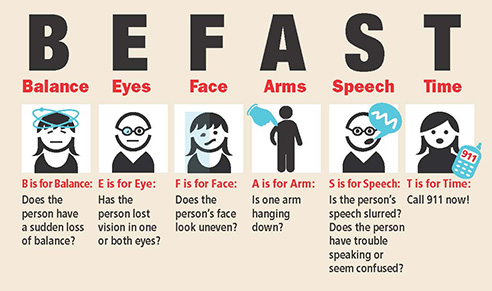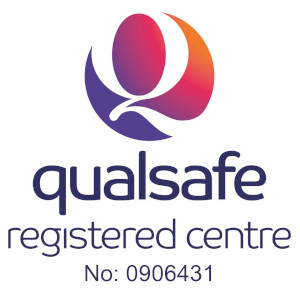Do you fear that someone could be having a Stroke and you have no idea? Here we discuss the top 6 early warning signs of a stroke.
Stroke is a medical emergency that can have life-altering consequences for individuals and their loved ones. Every year, millions of people worldwide are affected by stroke, making it a significant public health concern. Despite its prevalence, stroke remains widely misunderstood, and awareness of its causes, symptoms, and prevention strategies is crucial.
In this blog, we’ll delve into the intricacies of stroke, exploring its various types, risk factors, warning signs, and treatment options. We’ll also discuss the importance of rapid intervention during a stroke and the critical role of rehabilitation in the recovery process. Additionally, we’ll examine lifestyle modifications and preventive measures that can help reduce the risk of stroke and promote overall brain health.
Whether you’re a healthcare professional, a stroke survivor, a caregiver, or simply someone interested in learning more about this condition, this blog aims to provide valuable insights and practical information to empower individuals and communities in the fight against stroke.
Join us as we navigate the journey through stroke, from recognition to recovery, and discover the resilience of the human spirit in overcoming this formidable challenge.
Annually, 15 million people worldwide suffer a stroke. Of these, 5 million die and another 5 million are left permanently disabled, placing a burden on family and community. Stroke is uncommon in people under 40 years; when it does occur, the main cause is high blood pressure.
Understanding Stroke: Causes and Risk Factors
Stroke occurs when there is a disruption in blood flow to the brain, leading to damage of brain cells. This interruption in blood flow can be caused by a blockage in a blood vessel (ischemic stroke) or by the rupture of a blood vessel (haemorrhagic stroke). Understanding the underlying causes and risk factors associated with stroke is essential for prevention and management.
Causes of Stroke:
Ischemic Stroke: The most common type of stroke, ischemic stroke occurs when a blood clot forms and blocks blood flow to a part of the brain. These clots often originate from fatty deposits (plaques) that build up in the arteries, a condition known as atherosclerosis.
Haemorrhagic Stroke: This type of stroke occurs when a weakened blood vessel in the brain ruptures and leaks blood into surrounding tissue, causing damage and swelling. High blood pressure (hypertension) is a significant risk factor for haemorrhagic stroke as it weakens blood vessel walls over time.
Transient Ischemic Attack (TIA): Often referred to as a “mini-stroke,” a TIA is caused by a temporary blockage of blood flow to the brain. While TIAs typically resolve within minutes to hours and do not cause permanent damage, they are considered warning signs of an impending stroke and should be taken seriously.
Risk Factors for Stroke:
High Blood Pressure (Hypertension): Elevated blood pressure is the single most significant risk factor for stroke. Managing hypertension through lifestyle modifications and medication can significantly reduce the risk of stroke.
Smoking: Tobacco smoke contains chemicals that damage blood vessels and increase the likelihood of blood clots, making smokers more susceptible to stroke. Quitting smoking can substantially lower stroke risk.
Diabetes: Individuals with diabetes have an increased risk of stroke due to elevated blood sugar levels, which can damage blood vessels and contribute to atherosclerosis. Proper management of diabetes is crucial for stroke prevention.
High Cholesterol: Elevated levels of LDL cholesterol (“bad” cholesterol) can lead to the buildup of plaques in the arteries, narrowing blood vessels and increasing the risk of clot formation. Lowering cholesterol levels through diet, exercise, and medication can help reduce stroke risk.
Obesity and Physical Inactivity: Being overweight or obese and leading a sedentary lifestyle are associated with a higher risk of stroke. Regular exercise and maintaining a healthy weight can lower this risk.
Poor Diet: A diet high in saturated fats, cholesterol, and sodium and low in fruits, vegetables, and whole grains can contribute to hypertension, high cholesterol, and obesity, all of which are risk factors for stroke. Adopting a heart-healthy diet can help mitigate these risks.
Excessive Alcohol Consumption: Heavy alcohol consumption can raise blood pressure and contribute to the development of atrial fibrillation (an irregular heartbeat), both of which increase the risk of stroke. Limiting alcohol intake can help lower stroke risk.
Age and Gender: The risk of stroke increases with age, with the majority of strokes occurring in individuals over the age of 65. Men have a slightly higher risk of stroke than women, although women are more likely to die from stroke.
Family History and Genetics: A family history of stroke or certain genetic factors can predispose individuals to stroke. While these factors cannot be modified, awareness of family history can help inform preventive measures.
Race and Ethnicity: Certain racial and ethnic groups, including African Americans, Hispanics, and Native Americans, have a higher risk of stroke than Caucasians. The reasons for these disparities are complex and may be influenced by socioeconomic factors, access to healthcare, and genetic predispositions.
Spotting the Signs and Symptoms – The Top 6 Early Warning Signs of a Stroke
Recognising the signs and symptoms of stroke is crucial for prompt medical intervention, as time is of the essence in minimizing brain damage and maximising recovery. Here are the key signs and symptoms to be aware of:
- Facial Drooping: One side of the face may droop or become numb. Ask the person to smile and check if their smile is uneven.
- Arm Weakness: One arm may become weak or numb. Ask the person to raise both arms and see if one arm drifts downward.
- Speech Difficulty: Speech may become slurred or difficult to understand. Ask the person to repeat a simple sentence and listen for any abnormalities.
- Sudden Numbness: Sudden numbness or weakness, particularly on one side of the body, may occur, affecting the face, arm, or leg.
- Confusion: Sudden confusion, difficulty understanding, or trouble speaking or comprehending language may occur.
- Trouble Walking: Sudden dizziness, loss of balance, or difficulty walking may occur, often accompanied by coordination problems.
- Severe Headache: A sudden, severe headache, often described as the worst headache of one’s life, may occur, especially if it is accompanied by other symptoms.
- Balance: can’t walk in a straight line, becoming clumsy or falling over.
- Eyes: Vision blurred, can’t see properly.
Remember the acronym BE FAST to help recognise the signs of stroke:
- Balance

- Eyes
- Face drooping
- Arm weakness
- Speech difficulty
- Time to call emergency services
If you or someone else experiences any of these signs or symptoms, it’s crucial to seek medical attention immediately. Time lost is brain lost, and early treatment can significantly improve outcomes for stroke patients. Call emergency services or go to the nearest emergency room without delay. Every minute counts in minimizing the potential damage caused by a stroke.
Emergency Response: What to Do When Someone Is Having a Stroke
When someone is having a stroke, it’s crucial to act quickly. Here’s what to do in case of a suspected stroke:
- Recognise the Signs: Be familiar with the signs and symptoms of stroke. Remember the BE FAST acronym:
- Balance: Observe the person on their balance and coordination if they are currently walking
- Eyes: Ask the person if they can see properly, letters or pictures.
- Face drooping: Ask the person to smile and check if one side of their face droops.
- Arm weakness: Ask the person to raise both arms and see if one arm drifts downward.
- Speech difficulty: Ask the person to repeat a simple sentence and listen for slurred or strange speech.
- Time to call emergency services: If you observe any of these signs, call emergency services immediately.
- Call Emergency Services: Time is critical in stroke treatment. Call your local emergency number or 911 immediately. Provide information about the person’s symptoms and current condition.
- Stay Calm and Reassure the Person: While waiting for emergency services to arrive, stay calm and reassure the person. Encourage them to rest and avoid any unnecessary movement.
- Do Not Give Anything to Eat or Drink: Refrain from giving the person anything to eat or drink, as this could cause choking if their ability to swallow is impaired.
- Keep the Person Comfortable: Ensure the person is in a safe and comfortable position. If they are conscious, you can help them sit or lie down with their head and shoulders slightly elevated.
- Monitor Vital Signs: If you’re trained to do so, you can monitor the person’s vital signs, such as breathing and pulse. Be prepared to provide CPR if necessary.
- Note the Time of Onset: If possible, try to determine when the person’s symptoms started. This information can be crucial for healthcare providers in determining the appropriate course of treatment.
- Do Not Drive the Person to the Hospital Yourself: It’s important to wait for emergency medical services to arrive. They are equipped to provide immediate medical care and transportation to the appropriate healthcare facility.
Remember, every minute counts when someone is having a stroke. By acting quickly and seeking medical help promptly, you can help improve the person’s chances of a successful recovery and minimize the potential long-term effects of the stroke.
For information about Stroke and the top 6 early warning signs of a stroke check out the Stroke Association website.
Our First Aid at Work Courses
All of our courses are tailored for the group of learners in a fun and friendly way. We consider your start and end times to adapt to your staff schedule. We can add any specifics from your polices, systems of work or previous accidents and risk assessments amendments. On our courses we can add any extra modules or certain previous accidents or near misses. The first aid courses can be adapted to include an element of health and safety. You are really getting a lot for your money and time taking courses with HMB Training Services. Lets teach you what you need to know before giving CPR and the top 6 early warning signs of a stroke.
Emergency first aid at work courses near me;
The Emergency First Aid at Work course is a vital training designed to equip individuals with the necessary skills to handle emergency situations in the workplace.
First Aid at Work;
The first aid at work courses near me are a comprehensive training course designed to provide individuals with the knowledge and skills necessary to effectively respond to a wide range of medical emergencies in the workplace.
Why is it vital to know how to administer First Aid;
- Reduce accidents and injuries in your workplace
- Quick reaction and speed in administrating first aid will help save lives
- Reduce the number of incidents by sufficient trained first aiders
- Become more confident and knowledgeable in treating someone
- Increases safety within the workplace; having first aid training promotes a sense of safety and well-being
- Reduce the cost to the employer; reduce staff absences and fines from HSE
- First aid Training is a form of team-building activity
Why book your Training with HMB Training Services Ltd
How can HMB Training Services help you? HMB Training Services was created in August 2016 by founder and director Heather Marie Bird. Heather has worked at large companies such as Cat Finning and A-Plant as well as smaller companies and schools.
HMB Training Services can help you with the following:
- Emergency First Aid
- First Aid at Work
- Re-qualifying First Aid
- Annual First Aid refreshers
- Health & Safety
- Manual Handling
- Fire Awareness
- Fire Marshall
- Mental Health First Aid
We can help manage your certifications by reminding you when renewals become due so that you don’t have to keep track of everyone’s individual renewal dates.
We can offer times to suit your business needs and can visit your company to train groups of four or more people. Our training sessions are adaptive to the audience and we can arrange to include any additional modules that may be considered relevant for your particular business.
If you are looking for first aid at work curse and want to know more about the top 6 early warning signs of a stroke more in depth please get in touch.
Read more blogs here: https://www.hmbtrainingservices.co.uk/latest-news
Additionally, please do call us on 01543 453338 to see how we can help with delivering group training courses and help you learn more on the top 6 early warning signs of a stroke.



